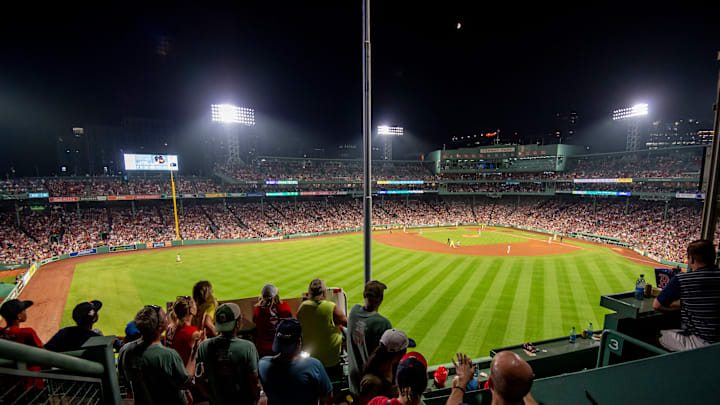In the final home game of the 2023 season, the Boston Red Sox were shut out in Fenway losing 5-0 to the Tampa Bay Rays.
With the win, the playoff-bound Rays improve to 97-62 while the Red Sox fall to a record of 76-82, with a 39-42 record at home.
The loss locks the Red Sox into a fifth place finish in the American League East for the third time in the last four seasons. In a reflection of the Red Sox's performance in September (7-17), they did not put up much of a fight in 2023's Fenway finale.
The Red Sox surrendered the first run of the game in the top of the second inning. The one-run lead (which would grow to five) proved too much for the Red Sox offense, who could only muster three hits the entire game.
The lone bright spot for the Red Sox was in the sixth where Justin Turner was pulled from the game to get a standing ovation in front of the Fenway crowd.
Thank you @redturn2 🫶 #RedSox pic.twitter.com/y6ERvu5BVH
— NESN (@NESN) September 27, 2023
The Red Sox would lose 5-0 and watch the Rays celebrate their playoff birth in the Fenway visitor's clubhouse 10 days after actually clinching a playoff position.
Attendance for the game was announced at 34,559, a few thousand shy of a sellout.
What is keeping Fenway Park attendance down?
On the surface, Red Sox attendance this season increased from last year. The Red Sox saw an increase of 490 fans (about 1.3%) in average attendance between 2022 and 2023 with Fenway filling to just over 87% of capacity.
When you compare these numbers to attendance before 2020 however, they look much worse.
In 2019, the Red Sox had an average attendance of 35,994 fans per game (about 96% of capacity) according to Baseball Reference. In 2022 and 2023, the Red Sox did not see average attendance come within 3,000 of 2019's average.
For a divisional comparison, in 2023 the Rays, Orioles, and Blue Jays have exceeded their 2019 average attendance. The Yankees came within 500 fans (about 0.9%) of their 2019 average attendance according to Baseball Reference.
Leaguewide, the MLB average attendance across all teams in 2023 exceeded the 2019 average.
The initial and most obvious answer to the Red Sox stagnant attendance is performance. 2023 will be the third out of four seasons that the Red Sox have finished in fifth.
Attendance numbers for the Red Sox over the 16 seasons before 2020 say otherwise. Since 2004, average attendance at Fenway Park never slipped below 34,900 fans per game (about 93% of capacity).
During that period the Red Sox missed the playoffs seven times and finished fifth in the AL East three times. Out of those seasons, average attendance never dropped below 35,000 fans.
In fact, the lowest average attendance the Red Sox ever saw between 2004 and 2019 was a world-series winning season in 2013.
What this leads towards is that the problem goes deeper. It is a problem that ownership hopes to solve in part by having Chaim Bloom fired: Belief.
It is not hard to see that Red Sox nation was struggling to get behind Chaim Bloom's vision for the past four seasons.
Whether it be John Henry getting booed in his own stadium at the NHL Winter Classic (he denied this) or the entire front office being booed at Winter Weekend, fans have not been happy.
There are numerous reasons that could be looked at as to why fans do not believe like they used to. It could be lack of spending, lack of star power, lack of direction, etc.
All these different factors fall under one large umbrella; under Chaim Bloom, the Red Sox did not operate as they had in the past.
His removal is a signal to fans from ownership that things are going to change. If the team can make fans believe again, believe that the team is trying to win, and believe that there is a clear plan, the attendance may follow.
